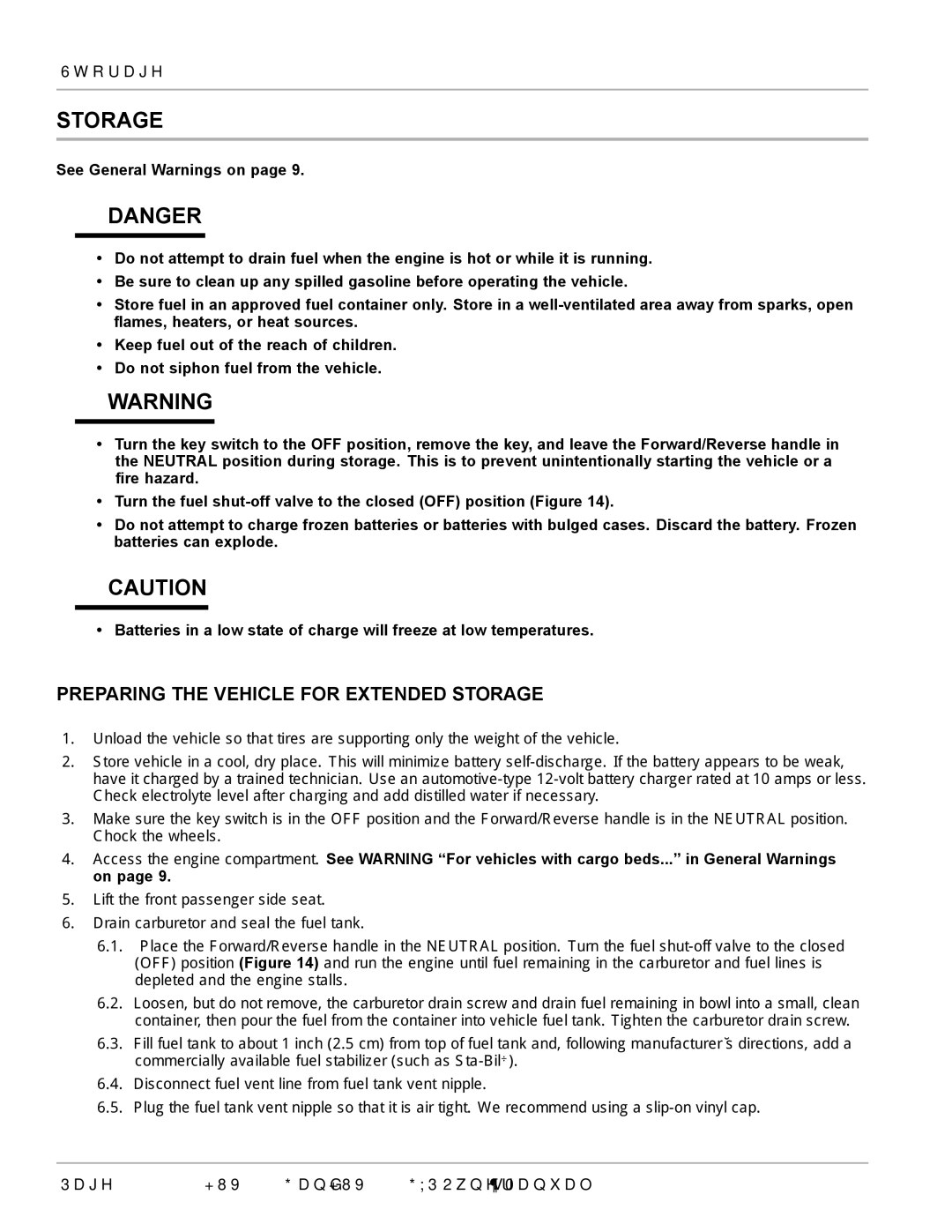
Storage
STORAGE
See General Warnings on page 9.
![]() DANGER
DANGER
•Do not attempt to drain fuel when the engine is hot or while it is running.
•Be sure to clean up any spilled gasoline before operating the vehicle.
•Store fuel in an approved fuel container only. Store in a
•Keep fuel out of the reach of children.
•Do not siphon fuel from the vehicle.
![]() WARNING
WARNING
•Turn the key switch to the OFF position, remove the key, and leave the Forward/Reverse handle in the NEUTRAL position during storage. This is to prevent unintentionally starting the vehicle or a fire hazard.
•Turn the fuel
•Do not attempt to charge frozen batteries or batteries with bulged cases. Discard the battery. Frozen batteries can explode.
![]() CAUTION
CAUTION
• Batteries in a low state of charge will freeze at low temperatures.
PREPARING THE VEHICLE FOR EXTENDED STORAGE
1.Unload the vehicle so that tires are supporting only the weight of the vehicle.
2.Store vehicle in a cool, dry place. This will minimize battery
3.Make sure the key switch is in the OFF position and the Forward/Reverse handle is in the NEUTRAL position. Chock the wheels.
4.Access the engine compartment. See WARNING “For vehicles with cargo beds...” in General Warnings on page 9.
5.Lift the front passenger side seat.
6.Drain carburetor and seal the fuel tank.
6.1.Place the Forward/Reverse handle in the NEUTRAL position. Turn the fuel
6.2.Loosen, but do not remove, the carburetor drain screw and drain fuel remaining in bowl into a small, clean container, then pour the fuel from the container into vehicle fuel tank. Tighten the carburetor drain screw.
6.3.Fill fuel tank to about 1 inch (2.5 cm) from top of fuel tank and, following manufacturer’s directions, add a commercially available fuel stabilizer (such as
6.4.Disconnect fuel vent line from fuel tank vent nipple.
6.5.Plug the fuel tank vent nipple so that it is air tight. We recommend using a
Page 24 2008 HUV
